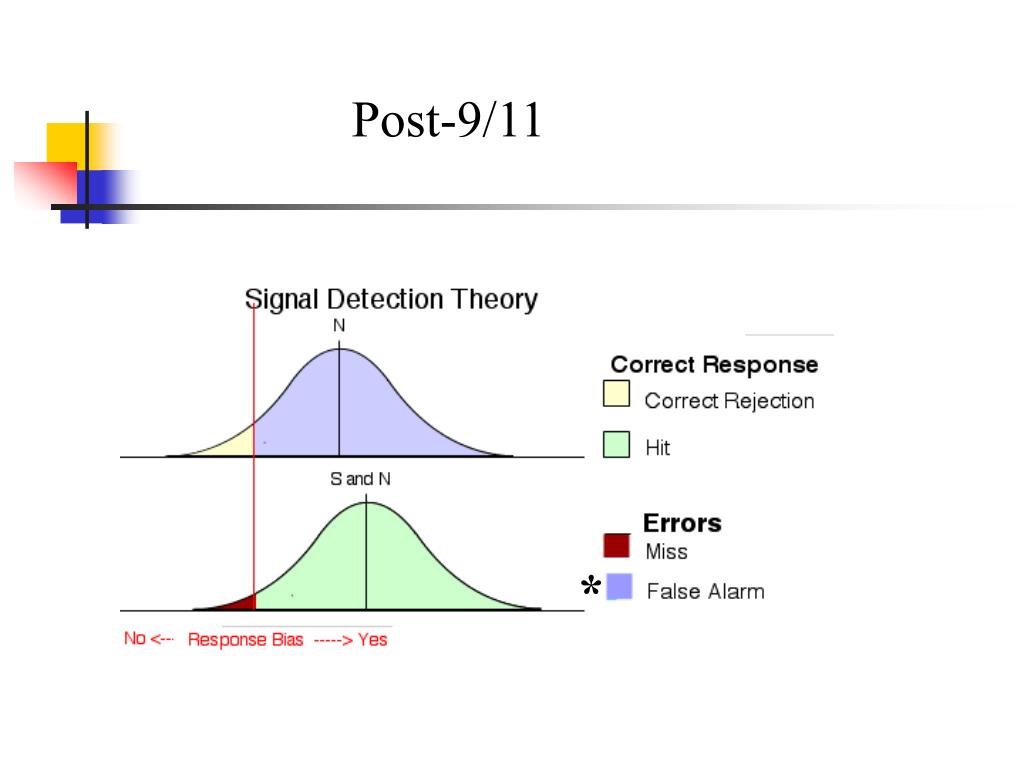
This person is "detecting" a stimulus, or signal, that is not there because it would be worse to miss the person than to check to see if the individual is there, only to find that the visitor has not yet arrived. As time goes on, the person begins to "hear" the visitor and may open the door, only to find that nobody is there. Suppose a person is expecting an important visitor, someone that it would be unfortunate to miss. Finally, when a person is quite uncertain as to whether the stimulus was present, the individual will decide based on what kind of mistake in judgment is worse: to say that no stimulus was present when there actually was one or to say that there was a stimulus when, in reality, there was none.Īn example from everyday life illustrates this point. Further, a more sensitive person requires less stimulus intensity than a less sensitive person would. In other words, a person will be able to detect more intense sounds or lights more easily than less intense stimuli. Instead, the theory involves treating detection of the stimulus as a decision-making process, part of which is determined by the nature of the stimulus, by how sensitive a person is to the stimulus, and by cognitive factors. This approach abandons the idea of a threshold. In general, psychologists typically define threshold as that intensity of stimulation that a person can detect some percentage of the time, for example, 50 percent of the time.Īn approach to resolving this dilemma is provided by signal detection theory. There is no single, fixed value below which a person never detects the stimulus and above which the person always detects it. Factors other than the sensitivity of sense receptors influence the signal detection process. Unfortunately, one of the problems with this concept was that even though the level of stimulation remained constant, people were inconsistent in detecting the stimulus. This activity led to the development of the idea of a threshold, the least intense amount of stimulation needed for a person to be able to see, hear, feel, or detect the stimulus. One of the early goals of psychologists was to measure the sensitivity of our sensory systems. Turkish Journal of Electrical Engineering and Computer Science.A psychological theory regarding a threshold of sensory detection. %J Turkish Journal of Electrical Engineering and Computer ScienceĪn innovative peak detection algorithm for photoplethysmography signals: an adaptive segmentation method. %T An innovative peak detection algorithm for photoplethysmography signals: an adaptive segmentation method %0 Turkish Journal of Electrical Engineering and Computer Science An innovative peak detection algorithm for photoplethysmography signals: an adaptive segmentation method T2 - Turkish Journal of Electrical Engineering and Computer Science T1 - An innovative peak detection algorithm for photoplethysmography signals: an adaptive segmentation method "An innovative peak detection algorithm for photoplethysmography signals: an adaptive segmentation method". Turkish Journal of Electrical Engineering and Computer Science 24 (2016 "An innovative peak detection algorithm for photoplethysmography signals: an adaptive segmentation method" Turkish Journal of Electrical Engineering and Computer Science To evaluate the estimated pulse rate and HRV signals from PPG, Poincar\'Īn innovative peak detection algorithm for photoplethysmography signals: an adaptive segmentation method In this method, the PPG signals are first separated into segments with sample sizes and then the peak points in these signals are detected by comparing with maximum points in these segments. This peak detection algorithm has been called an adaptive segmentation method (ASM). Finding peak values correctly from PPG signals, the HRV signal can be estimated. In the present paper, a novel peak detection algorithm was developed for PPG signals. In the estimation of the HRV signal from the PPG signal, HRV is calculated by measuring the time intervals between the peak values in the PPG signal. PPG is a method widely used to measure blood volume of tissue on the basis of blood volume change in every heartbeat.
#SIGNAL DETECTION THEORY SERIES#
HRV is a measure of the fluctuation of the time interval between heartbeats and is calculated based on time series between strokes derived from electrocardiogram (ECG), arterial pressure (AP), or PPG signals, separately.

The second purpose is to estimate heart rate variability (HRV) by finding the peaks in the PPG signal. The first purpose is to detect M-peaks from raw photoplethysmography (PPG) signals with no preprocessing method applied to the signals.


 0 kommentar(er)
0 kommentar(er)
